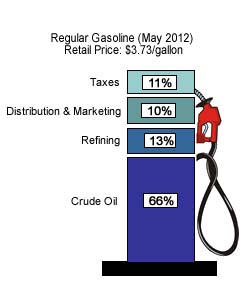Source: Flex Fuel.com
Gas prices are slowly rising across the United States after months of a steadily declining, but who is really profiting off your gasoline purchases.
It might surprise you, but it isn’t the gas station.
An analysis of gas prices by Sageworks, a financial analysis company, shows that gas stations aren’t bringing in huge profit margins — or not the profits that consumers think.
For every $50 fuel purchase, gas station owners take home a measly $1, or a little more than 2 percent, according to the analysis by Sageworks. Visa or MasterCard make $1.25, or 2.5 percent, off every $50 gas purchase. (That’s why you see some gas stations in the Houston area offer you a discount for paying with cash.)
According to the research, crude oil accounts for 61.5 percent of the cost, or $30.75.
The rest of your money goes to refining crude oil into gasoline, $7 (14 percent); delivery $4 (8 percent); and taxes $6 (12 percent).
The U.S. Energy Information Administration puts out their own break down for gas prices, and their breakdown isn’t too far off Sageworks’ analysis.
According to the administration, a gallon of gas (at the July price of $3.42 per gallon) is broke down like this: taxes, 38 cents (11 percent, or $5.50 for a $50 purchase); distribution and marketing, 34 cents (10 percent, or $5); refining, 44 cents (13 percent, or $6.50); and crude oil $2.26 (66 percent, or $33).
Obviously, there are some slight differences between the two breakdowns, but they aren’t too far off.
So who do you blame for the high prices?

